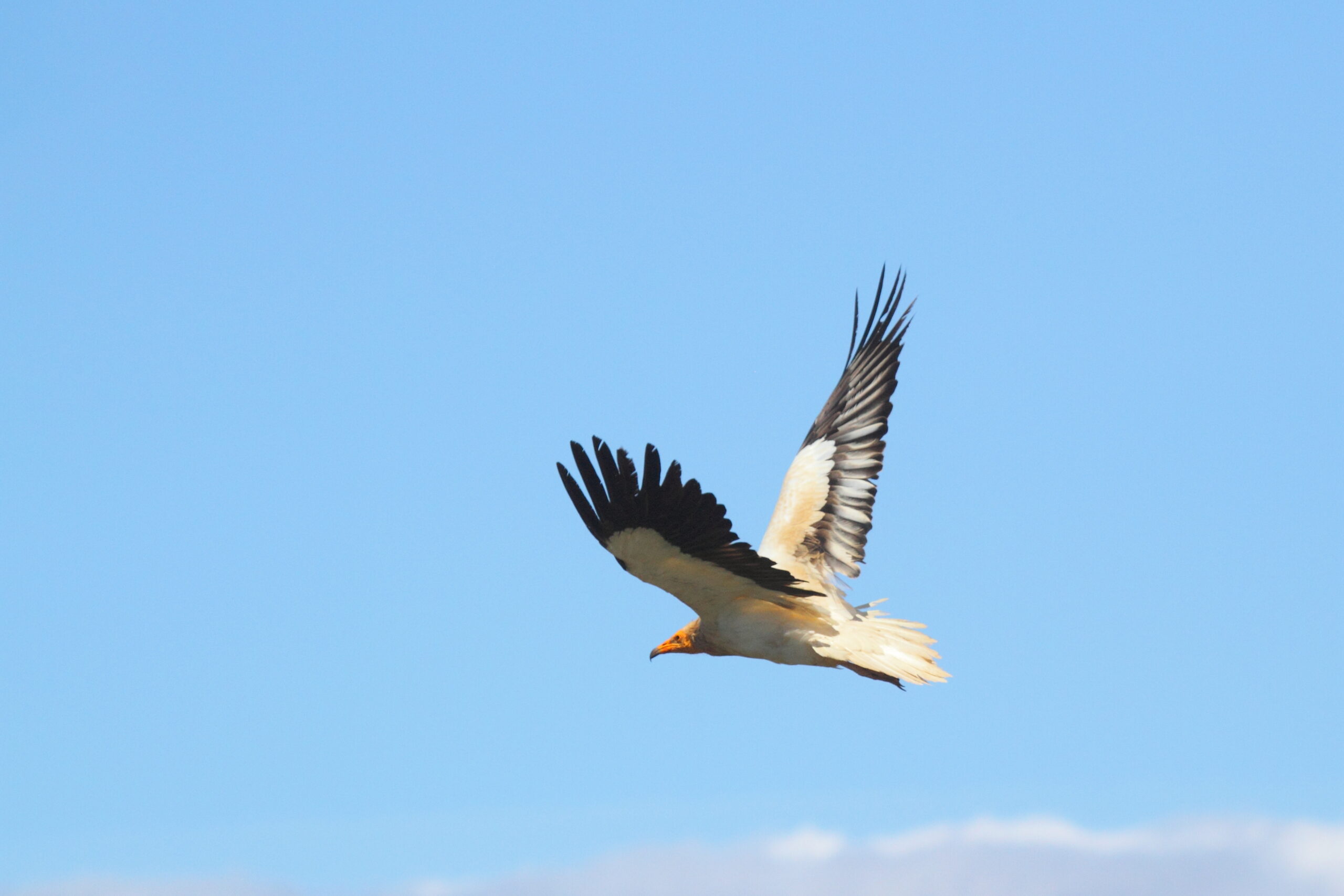Two years after the LIFE Rupis project started, and when the project reached its mid-way point, an officer from Easme (the EU agency managing the LIFE fund) has visited the project, together with a staff member from the external company hired by the EU to follow in detail the LIFE projects, to see first-hand the excellent progress achieved by project partners.
The LIFE Rupis project aims to implement actions to strengthen the populations of the Egyptian vulture (and the bonelli´s eagle) at the trans-border Douro, by reducing the mortality of these birds and increasing their breeding success. The Egyptian vulture is the smallest vulture in Europe, and it is classified as “Endangered” – in Europe its populations have declined by 50% over the last 40 years, and the Douro canyon includes one of its strongholds in Iberia – 135 pairs, according to the baseline study done in the beginning of the project
The project includes equipping electric lines against electrocution, several actions that aim to minimize the threat of illegal poisoning, targeted management of over 1,000 hectares of important habitats for the species and also the creation of a network of supplementary feeding stations.
The project is implemented by the VCF and partners, including SPEA (BirdLife in Portugal), ATN and Palombar (regional conservation organisations in NE Portugal), the Junta de Castilla y Leon & the Fundación Patrimonio Natural de Castilla Y León, the Portuguese electricity distributor EDP-D, the Portuguese statutory conservation agency ICNF and the Portuguese environmental police force (GNR), and is co-funded by the MAVA Foundation.
During the visit, Anita Fassio from Easme and Sara Barcelo from Neemo have seen a demonstration by the anti-poisoning dog unit established in this project (see photo), and managed by the GNR, and that has been patrolling the area to prevent and detect poison baits. They have also visited one of the 16 pigeon houses (“pombais”) that have been restored by Palombar. By the end of the project 36 pombais will be fully restored and repopulated with rock pigeons – one of the main natural prey of the bonelli´s eagle.
The group has also visited the Escalhão supplementary feeding site – one of the 5 established on the Portuguese side of the Douro to benefit the vultures and other scavengers, and where two adult Egyptian vultures have been recently tagged. They visited also one of the properties that have been purchased by ATN, and where habitat management work that benefits the rabbit and partridge has already been done – mostly creation of open areas and water holes, seeding with biodiversity-friendly seed mix, and establishment of structures for rabbit colonies, to create a wildlife-friendly Mediterranean mosaic. In the end of the project 265ha will be purchased for habitat management, while a further 1500ha will be managed under agreement with the respective landowners.
Finally, the visitors saw also the works for the insulation of several pylons in a medium-tension line where a vulture has been killed in the past (see photo) – an action managed by the Portuguese electricity company (EDP). So far 54 electricity pylons have been isolated in about 7,5 km of lines, while we expect to minimise electrocution in 150 pylons (approximately 20km of lines).
Photos: VCF, SPEA



